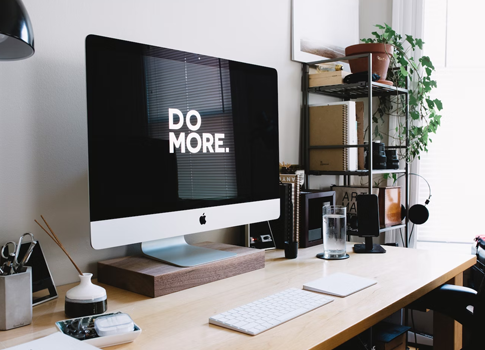During lockdown many of us will have become used to the new norm of work life and socialising. Joining online conference calls, whether it be for work, study or catching up with friends, has become as habitual as going into a meeting room, walking into a classroom or heading out the door to meet your friends or family.
Alongside the new norm of virtual meet ups, we have become used to endless technical hitches, including echoes, freezing, and that one person on the call who always has poor connection. The fact is that after a day of back to back zoom calls and an evening of video calls with friends/family, we can feel absolutely exhausted – this is known as ‘zoom fatigue’
So why do virtual meetings feel more tiring than face to face meetings?
In short, it is because our brains are working much harder and we tend to experience more stress during video calls. In face to face conversation we rely heavily on nonverbal cues such as facial expressions, body language, as well as the pitch and tone of voice in order to judge how best to behave in that situation to let the conversation flow naturally.
Cognitive Disconnect
On a video call it can be a lot harder to read people’s expressions and body language, especially if their video quality is poor or you can only see their face. Therefore we are using maximum cognitive effort to read the nonverbal cues as well as listen to speech, making it harder to relax and leading to fatigue.
An expert in the area, Petrigleri, explained this tiredness is due to a cognitive disconnect, “Our minds are together when our bodies feel we’re not. That dissonance, which causes people to have conflicting feelings, is exhausting. You cannot relax into the conversation naturally.”
Building trust
There is also evidence to suggest that without face to face interaction and reduced non-verbal signals we find it harder to establish trusting relationships.
This is demonstrated by Roghanizad’s recent research, where he found that non-verbal cues don’t register in a key interactive part of the human brain that is fundamental for trust and establishing understanding with people working in groups.
His research has shown that even wearing sunglasses short circuits that part of the brain and disrupts the process. Therefore without face to face interaction and important nonverbal cues like eye contact, it can be more challenging and stressful to build up trust in the workplace.
Taking centre stage
Another factor that leads to exhaustion is, whether you mean to or not, spending most of your hour-long zoom call staring at your own face.
On a video call you are in full view of everyone and hyper-aware of your own appearance, facial expressions, and how others perceive you. The reason why this can be exhausting is explained by Marissa Shuffler, “When you’re on a video conference, you know everybody’s looking at you; you are on stage, so there comes the social pressure and feeling like you need to perform. Being performative is nerve-wracking and more stressful”.
Social spaces becoming work places
Before the pandemic, the norm would be to have separate places for working, relaxing, socialising, studying, and more. However during lockdown, our lives have been turned upside down and for many people, everything is happening in the same place.
Where we relax and socialise is now where we work and vice versa. This could result in a suboptimal work/life balance, especially if you are using zoom calls for work and for social purposes.
So what can be done to reduce zoom fatigue?
1. Try an alternative method of meeting
Sometimes it is worth asking yourself, could this zoom call be an email conversation? Or perhaps mix things up and go for a phone call instead. It may be that a zoom call is not needed for all interactions you have, whether it be for work or social purposes
2. Avoid back to back meetings if you can, and allow a break in between calls
Pre COVID, in between meetings we might grab a coffee, have a light-hearted chat with colleagues, stretch our legs or move to a different meeting room. It is harder to do that at home, but not impossible – give yourself breaks to make coffee, go for a walk to stretch your legs in between calls, and allow some time to have social catch-ups with your colleagues, not just about work.
3. Avoid multitasking and doing other tasks on video calls.
It can be tempting to try and do other work whilst on a video call. However, switching between tasks can cost you up to 40% of your productive time. Therefore you should try to view the video call and other work as separate, it can also help to close distractions such as emails/instant messenger services whilst on the call.
4. Have times when you switch off your video
To reduce the stress associated with being in full view and seeing yourself on screen, it might help to remove the box with your face on it for your view or maybe have your screen off to the side, as if you are in an adjoining room. Also If you are feeling drained you can try joining some calls with only audio enabled, and give yourself a break from constantly being in view!
Even with lockdown easing, zoom calls are likely to remain a constant part of our working routine. A recent study by YouGov found that 45% of workers expect to work more flexibly after lockdown, with 33% of respondents expecting to work from home at least 3 days a week and 81% expecting to work from home at least one day a week.
So as zoom calls look like they are here to stay, make sure you are taking breaks, checking in with yourself, and cutting out any unnecessary video calls.






